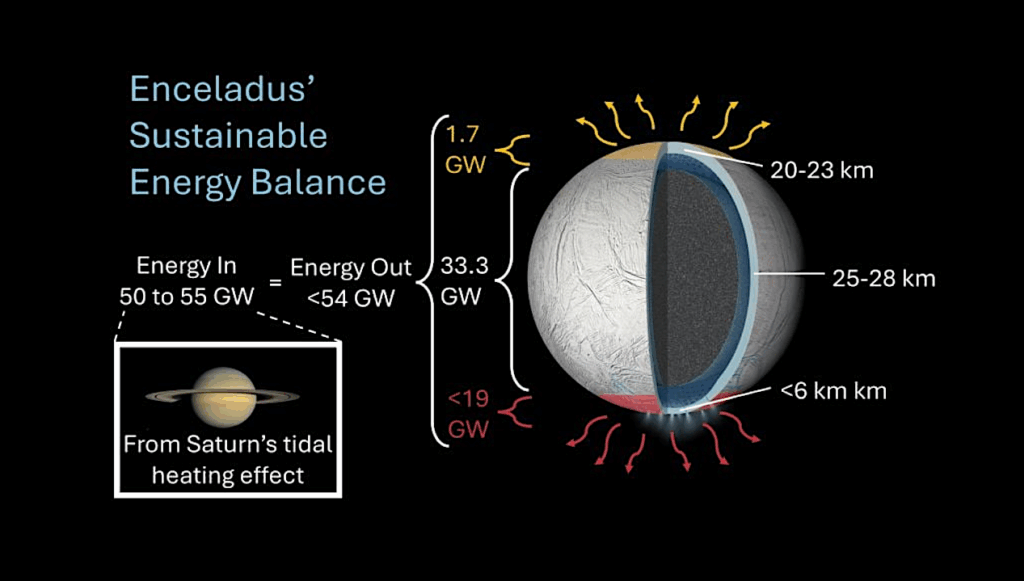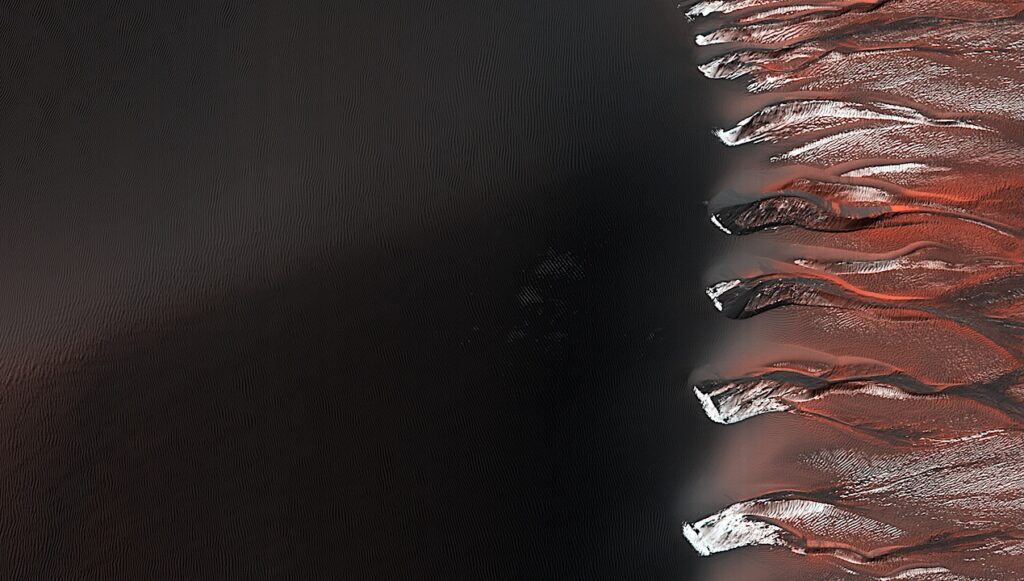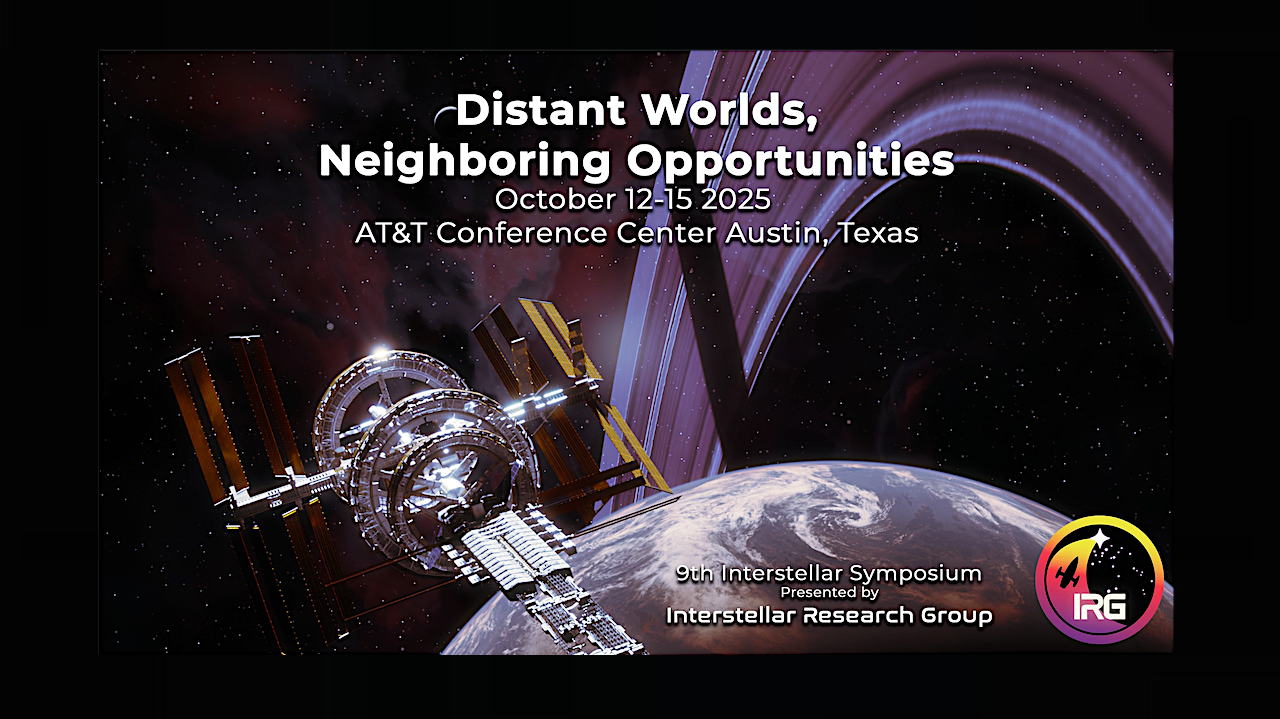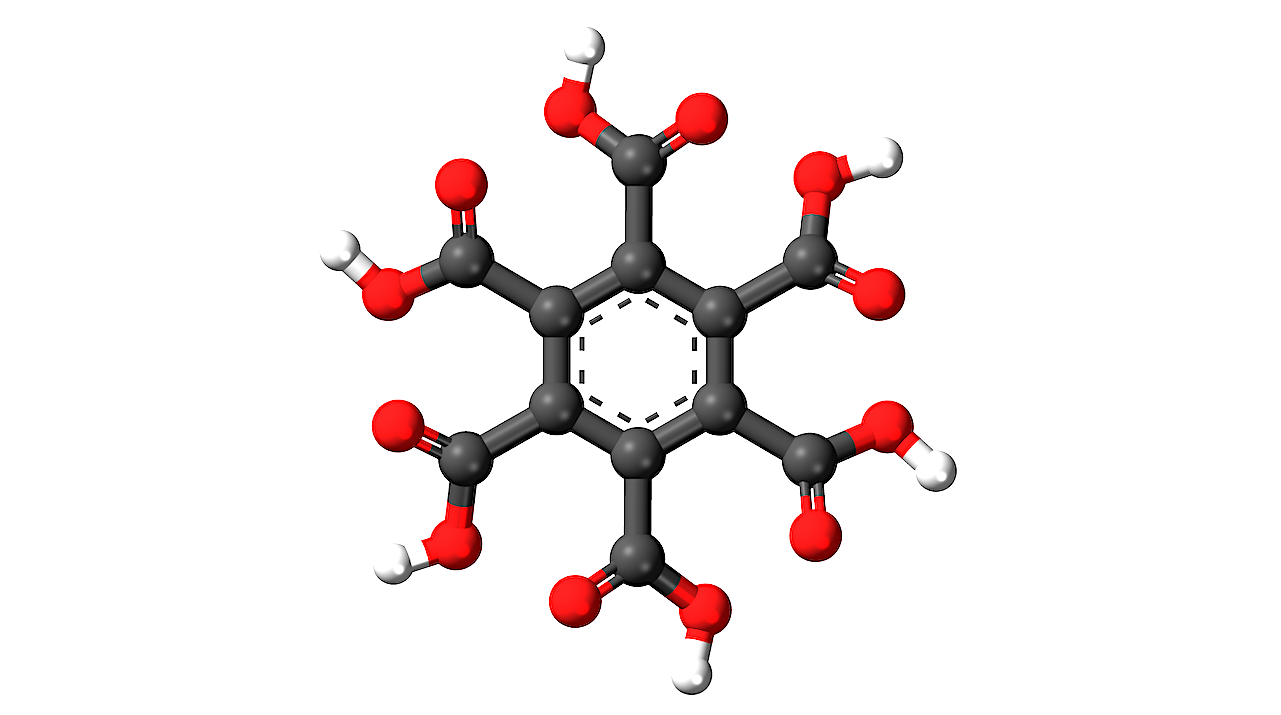Now Reading: The JWST Rocky Worlds DDT Program Reveals GJ 3929b To Likely Be A Bare Rock
-
01
The JWST Rocky Worlds DDT Program Reveals GJ 3929b To Likely Be A Bare Rock
The JWST Rocky Worlds DDT Program Reveals GJ 3929b To Likely Be A Bare Rock
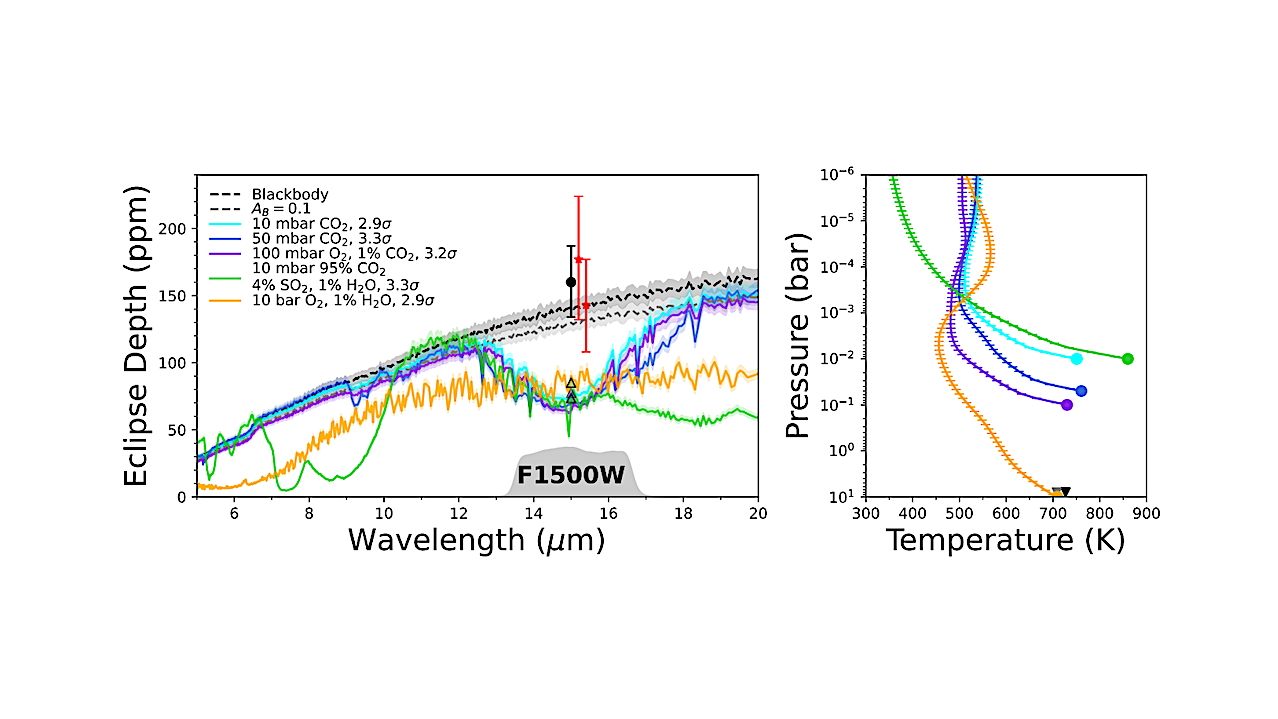

(left) Select HELIOS emission spectra for different atmospheric scenarios. Shaded regions indicate 1 σ uncertainties due to the planet-to-star radius ratio Rp/R⋆. The black point represents our joint-fit eclipse depth, whereas the red errorbars are the individual visits (Table 1). Triangles represent the F1500W bandpass-integrated model eclipse depths. (right) HELIOS-derived temperature-pressure profile for each atmospheric scenario, with individual atmospheric layers indicated by horizontal lines. The disk-averaged surface temperatures for bare rock surfaces are indicated by triangles. SO2 acts as extreme greenhouse gases, efficiently warming the lower atmosphere to high temperatures. Our results rule out a variety of CO2-rich atmospheres thicker than 100 mbar. — astro-ph.EP
We report first results from the JWST Rocky Worlds Director’s Discretionary Time program. Two secondary eclipses of the terrestrial exoplanet GJ 3929b were recently observed using MIRI photometric imaging at 15 um.
We present a reduction of these data using the updated SPARTA pipeline. We also refine the planet mass, radius, and predicted time of secondary eclipse using a new sector of TESS data and new, high-precision radial velocities from the MAROON-X spectrograph.
For the two JWST observations, we recover secondary eclipse depths of 177+47-45ppm and 143+34-35ppm at times consistent with a nearly circular orbit, as expected from the radial velocity data.
A joint fit of the two visits yields a dayside brightness temperature Tp,dayside = 782+/-79K for GJ 3929 b, which is consistent with the maximum brightness temperature Tmax = 737+/-14K for a bare, black rock (i.e., assuming zero Bond albedo and no heat redistribution).
These results rule out CO2-rich atmospheres thicker than 100mbar at >3sigma, suggesting that GJ 3929b has lost any significant secondary atmosphere. The radial velocity data also indicate two additional non-transiting planets in the system: a previously-identified planet in a 15.0d orbit, and a newly-identified planet candidate in a 6.1d orbit.
Qiao Xue, Michael Zhang, Brandon P. Coy, Madison Brady, Xuan Ji, Jacob L. Bean, Michael Radica, Andreas Seifahrt, Julian Sturmer, Rafael Luque, Ritvik Basant, Nina Brown, Tanya Das, David Kasper, Caroline Piaulet-Ghorayeb, Eliza M.-R. Kempton, Edwin S. Kite
Comments: Submitted To AAS
Subjects: Earth and Planetary Astrophysics (astro-ph.EP)
Cite as: arXiv:2508.12516 [astro-ph.EP] (or arXiv:2508.12516v1 [astro-ph.EP] for this version)
https://doi.org/10.48550/arXiv.2508.12516
Focus to learn more
Submission history
From: Qiao Xue
[v1] Sun, 17 Aug 2025 22:39:43 UTC (3,110 KB)
https://arxiv.org/abs/2508.12516
Astrobiology,
Stay Informed With the Latest & Most Important News
-
 012024 in Review: Highlights from NASA in Silicon Valley
012024 in Review: Highlights from NASA in Silicon Valley -
 02Panasonic Leica Summilux DG 15mm f/1.7 ASPH review
02Panasonic Leica Summilux DG 15mm f/1.7 ASPH review -
 03How New NASA, India Earth Satellite NISAR Will See Earth
03How New NASA, India Earth Satellite NISAR Will See Earth -
 04And Thus Begins A New Year For Life On Earth
04And Thus Begins A New Year For Life On Earth -
 05Astronomy Activation Ambassadors: A New Era
05Astronomy Activation Ambassadors: A New Era -
06SpaceX launch surge helps set new global launch record in 2024
-
 07Space Force plans new ‘Futures Command’ amid pressure to speed up modernization
07Space Force plans new ‘Futures Command’ amid pressure to speed up modernization













